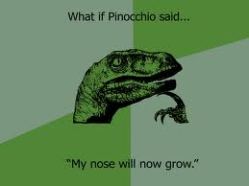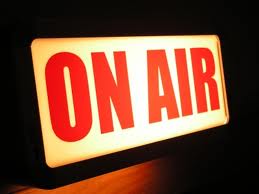by Alex Baer

philosoraptor meme courtesy of the quickmeme.com
A look into the history of memes and memetic theory
Have you ever wondered why, or how, things just sort of catch on? While nobody might say “sit on it” anymore, plank, or wear fedoras with their three piece suits, they were both at one point common practice. These are what we call memes.
A “meme” is “an idea, behavior or style that spreads from person to person within a culture.”
Despite looking like the French word meme (meaning “the same”), meme is a shortening of the Ancient Greek word mimeme, which means “imitated thing.”
The term was coined by Richard Dawkins in his book,The Selfish Gene. In his book, Dawkins explores the concept of treating ideas as living things, that is to say that they can “evolve,” much like life does.
Just like natural selection relies on variation, mutation, competition, and inheritance, to select for certain traits, so too does culture. Memes that do not spread or spread very slowly could be limited by being negatively impacting the people that act as their “hosts.”
With the advent of the Internet, it has become exponentially easier for these memes to potentially propagate and spread themselves out through a population. Before YouTube, there was Email. Remember the dancing baby?
And it’s only gotten better (or worse) from there. Leeroy Jenkins, MAH BUCKET, Honey Badger. Then there are the Advice Animals. Insanity Wolf, Hipster Cat, Confession Bear, 60’s Spiderman. And more are added every day!
While we could include viral videos in our definition, for now, we’ll think of Internet Memes as the ones you might see on Reddit, reblogged on Tumblr, or even on Facebook. For many years, most memes spawned directly from the forum 4chan.
Veteran memes such as Pedobear, Anonymous, and LOLcats call 4chan home. Others stem from the shared context of the userbase: growing up in the 90s, featuring Will and Carlton from The Fresh Prince of Bel-Air, as well as Milhouse from the Simpsons.
In the years since then, memes have exploded in popularity, with the demise of Digg, the rise of Reddit, and the proliferation of recycler sites like 9gag, Tumblr, and Buzzfeed. 4chan continues to create most of the memes out there, but original content isn’t exclusive to the cancerous site.
There seems to be one for almost every single facet of human interaction, but they can all be reduced to a lowest common denominator: they want to make us laugh. And they do so in a way that wouldn’t be possible outside of the Internet.
The vast majority of “memes” today involve a background (for example, either a stock photo of something, a still from a movie or TV show, or even a funny picture), bordered by two lines of white text at the top and bottom of the frame.
In this way, memes could potentially restructure how we look at jokes. Rather than a contextual set-up to a quick punchline, with the context already delineated, any amateur comedian could get right to the funny part.


